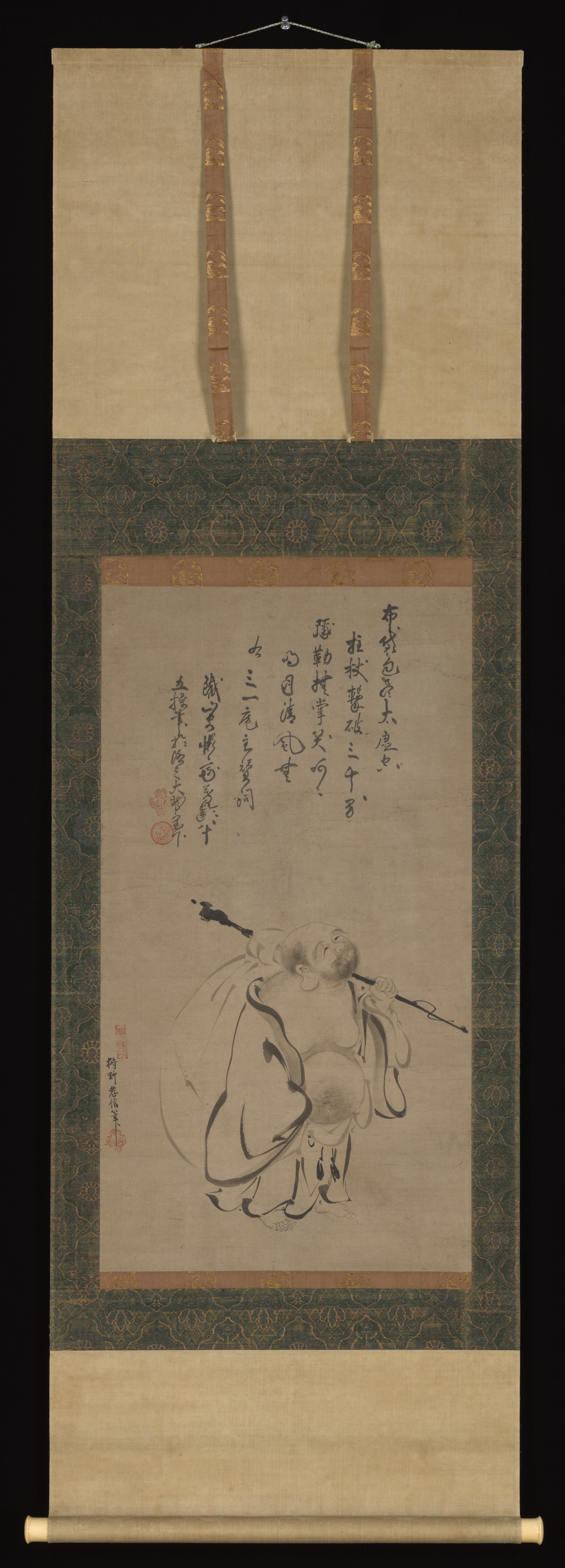Hotei
Kano Takanobu Japanese
Calligrapher Tetsuzan Sōdon Japanese
Hotei, a popular figure in the Zen pantheon, is often depicted as a rotund, good-humored monk carrying a large sack. A semihistorical figure, he is believed to have lived in southern China in the late ninth century and was eventually recognized as a manifestation of Miroku, Buddha of the Future. The poetic text here, from a eulogy for Hotei by the Chinese Daoist Bai Yuchan (1194–1229), was inscribed by Tetsuzan Sōdon, a leading monk-scholar who served as abbot of the Zen monastery Myōshinji in Kyoto.
Hotei’s sack encompasses
the Great Emptiness.
Holding a staff, he tramps
around three thousand worlds.
Miroku claps his hands, and laughs—
ha, ha! The bright moon shines,
the wind disappears.
—Translated by John T. Carpenter
On display for rotations 3 and 4.
Due to rights restrictions, this image cannot be enlarged, viewed at full screen, or downloaded.
This artwork is meant to be viewed from right to left. Scroll left to view more.



